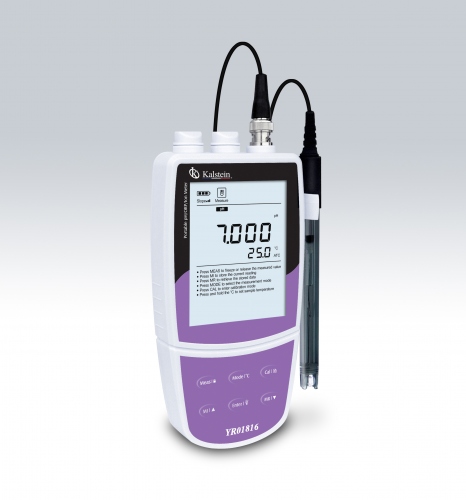An ion meter is a device used in laboratories and industries to measure the concentration of ions in a solution, by using ion electrodes (ISE) thanks to its electrochemical activity. An ion selective electrode (ISE) is a kind of sensor that allows ion testing in various types of samples. The process that these electrodes work with is ion exchange, which measures the potential difference that is produced by the contact of the electrode with the ion being determined.
These innovative equipment currently have many utilities, but it is used more frequently to measure and control water purity. Because pure water is required for many laboratory and clinical procedures. Moreover, that drinking water for consumption, should be as optimal as possible to avoid diseases and health conditions of people.
What is an ion?
An ion is an atom or group of electrically charged atoms. This molecule may have a positive or negative charge. A cation is an ion with a positive charge and an anion is one with a negative charge (atom or molecule).
Ions are formed when a neutral (electrically neutral) atom loses or gains electrons. Anions have more electrons than protons and cations have a higher proton number.
How does an ion meter work?
Measurement of ion concentration or specific ion measurements via an ion meter can be performed on a wide variety of samples such as: water, food, beverages, pharmaceuticals and also samples of biological origin. The operation of an ion meter occurs by means of selective ion electrodes (SIIs) and measuring devices that have a sensitive membrane capable of measuring ion activity. These measure the concentration of ion determined in a solution using a sensor electrode and a reference electrode.
They work, as we mentioned earlier through ion exchange, where you measure the potential difference that is generated when the electrode comes in contact with the ion being studied. The specific ion activity is transformed into electrical potential at the moment it comes into contact with the active membrane of the selective ion electrode. Thus, the measurement process in an ion meter is carried out by the use of two electrodes: the sensor and the reference sensor. The sensor electrode takes care of the selectivity of a specific ion. And the reference electrode is used to calculate the potential difference.
What do we offer you in Kalstein?
Kalstein is a company MANUFACTURER of laboratory equipment of the highest quality and the best technology at the best prices in the market, so you can make your purchase confidently with us, knowing that you have the service and advice of a firm and committed to innovation.
This time we present you our professional portable ammonia ion meter suitable for outdoor applications, precision: 1% F.S. This innovative device has the following features: HERE
- The professional portable ammonia ion meter is equipped with a backlit LCD display.
- Calibration from 2 to 5 points of low to high concentrations.
- Selectable concentration calibration points of 8, including 0.001 to 10000.
- Selectable Concentration Units – PPM, MG/L and MOL/L.
- The automatic electrode diagnosis shows the calibration points and slopes.
- Automatic temperature compensation ensures accurate readings across the range.
- Direct ion concentration reading simplifies the measurement process.
- Auto-read function The measurement end point is detected and locked.
- Calibration Due Alarm Applicants require the user to regularly calibrate the meter.
- Configuration menu allows you to configure the number of calibration points, stability criteria, temperature
- Unit, date and time, etc.
- The reset function automatically resumes all settings to factory default values.
- Memory stores expanded or remember up to 500 data sets.
- USB communication interface for data transfer or by connecting a power adapter to the meter.
For more information visit us on our website, in the products section: HERE

